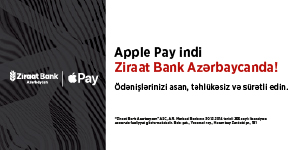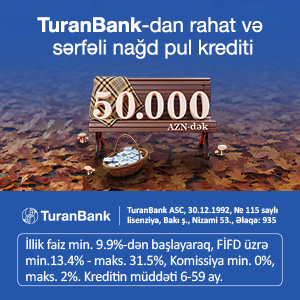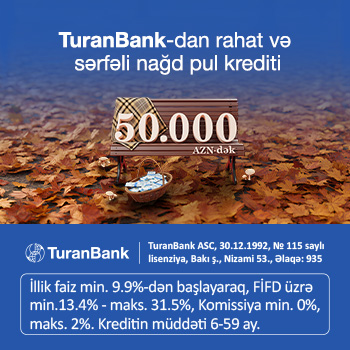Moody's Azərbaycanın reytinqini aşağı saldı

Moody's Azərbaycan hökumətinin emitent və təminatsız borc reytinqini "Ba1" səviyyəsindən "Ba2" səviyyəsinə endirib.
"Marja" agentliyin məlumatına istinadən xəbər verir ki, reytinqin proqnozu "stabil"dir.
Moody's həmçinin "Cənub Qaz Dəhlizi" Qapalı Səhmdar Cəmiyyətinin təminatsız borc reytinqini "Ba1" səviyyəsindən "Ba2" səviyyəsinə endirib.
Reytinqlərin azaldılması Azərbaycanın fiskal və iqtisadi gücünün zəifləməsini əks etdirir. Neftin aşağı qiymətləri aşağı olması, istehsalın azalması, bank sisteminin çox zəif olması iqtisadi artımı məhdudlaşdırır. Eyni zamanda dövlət borcu çox yüksək səviyyədədir. Bütün bunlar ölkənin borclarını geri qaytarmamaq risklərini artırır.
ƏHƏMİYYƏTLİ KREDİT RİSKİ SƏVİYYƏSİ
Moody's Uzunmüddətli Korporativ Öhdəliyi Reytinqinin ikinci səviyyəsi olan "Ba2" borcun "əhəmiyyətli kredit riski"nə məruz qala biləcəyini əks etdirir. Riskli öhdəliklər spekulyativdir.
Moody's downgrades Azerbaijan's rating to Ba2, with a stable outlook,
concluding review for downgrade
Moody's Investors Service (Moody's) has
downgraded the government of Azerbaijan's issuer and senior unsecured
debt ratings to Ba2 from Ba1 and changed the rating outlook to stable,
concluding the rating agency's review for downgrade initiated on May 19,
2017. Moody's also downgraded to Ba2 from Ba1 the senior unsecured debt
rating of Southern Gas Corridor CJSC (SGC), whose bonds are backed by the
government's guarantee, and changed the rating outlook to stable.
The rating downgrade reflects the significant and long-lasting weakening
of Azerbaijan's fiscal and economic strength, which is driven by the
ongoing impact of lower oil prices, the country's declining oil
production potential and its very weak banking system. Together these
factors will continue to constrain growth and pose material contingent
liability risks to the sovereign.
The stable outlook reflects Moody's expectation that the growth of
additional direct debt and contingent obligations, including government
guarantees stemming from financial support to Azerbaijan's banking sector
restructuring and its large hydrocarbon sector projects, will level off
by 2020. The stable outlook also assumes that, over time, the government
will manage fiscal policy and its own balance sheet and the assets of its
sovereign wealth fund in a way that will improve flexibility and capacity
to effectively buffer the impact of lower-for-longer oil prices and
ongoing declines in oil production.
Azerbaijan's local currency debt and deposit ceilings are lowered to Ba2
from Ba1. The foreign currency bond ceiling is also lowered to Ba2 from
Ba1. The foreign currency deposit ceiling is lowered to Ba3 from Ba2.
RATINGS RATIONALE
RATIONALE FOR THE RATING DOWNGRADE TO Ba2
The downgrade of Azerbaijan's government debt rating to Ba2 reflects a
steep rise in government indebtedness, both direct and indirect in the
form of guarantees, beyond the rating agency's expectations when the
rating was lowered to Ba1. Moody's does not expect the deterioration to
reverse.
The increase in gross government debt was initially a consequence of the
large depreciation of the exchange rate in 2015-16 but has been
exacerbated by the additional costs of supporting state-owned entities
(SOEs), primarily the country's biggest, state-owned bank, the
International Bank of Azerbaijan (IBA). Following the restructuring of
IBA, the government will assume about $2.45 billion in external debt from
the bank. Prior to this transaction, that support entailed the issuance
of government guarantees in support of Aqrarkredit (the vehicle into
which IBA's non-performing loans have been transferred). The bulk of
these guarantees are in the form of very long-term (30-year with a 5-year
grace period) manat-denominated promissory notes carrying a 0.15% rate
of interest. The remaining guarantees, which were meant to back the
bank's external liabilities, will be cancelled following the transfer of
most of those obligations to direct debt of the sovereign.
Moody's consolidates the explicit guarantees issued by the government in
support of Aqrarkredit and to a number of other SOEs into its overall
assessment of government indebtedness. This interpretation reflects the
rating agency's view that, for example, the likelihood of guarantees in
support of Aqrarkredit being triggered is high, given the poor quality of
the assets transferred at face value from IBA. It also reflects the close
operational relationship between the government and the SOEs, as
illustrated by the periodic transfer of funds by SOFAZ and the government
to pay the debt service of SOEs. Overall, explicit guarantees amounted to
about 60% of the government's gross debt at the end of 2016. That
proportion will diminish slightly to around 55% at the end of 2017.
On that basis, gross government debt in Azerbaijan is relatively high for
a developing country that is highly dependent on a single volatile source
of foreign currency income -- hydrocarbons -- that will continue to
shrink in the years ahead. Gross government debt accounted for roughly
51% of GDP at the end of 2016 and Moody's expects that number to rise to
about 52% of GDP by the end of this year and to more than 55% of GDP by
the end of next year.
Accordingly, Moody's expects that gross debt (including explicit
guarantees) will continue to climb towards 60% of GDP through 2020
before tapering off. Moreover, both SGC and its owners, the government
and the 100%-state-owned State Oil Company of the Azerbaijan Republic
(SOCAR), have additional financial commitments for various development
projects both domestically and abroad, some of which are not explicitly
guaranteed by the government.
With the large rise in gross government debt, Azerbaijan's fiscal
strength has continued to weaken beyond previous Moody's forecasts. That
said, the even-larger financial assets of the State Oil Fund of
Azerbaijan (SOFAZ), which were equivalent to about 88% of GDP at the end
of 2016, contain the deterioration in fiscal strength and maintain the
government's position as a net creditor. Assuming a relatively stable
manat exchange rate against the US dollar and little change in the dollar
value of SOFAZ assets, Moody's expects the government's net creditor
position (defined as the difference between SOFAZ assets and the
government's direct plus guaranteed debt) will contract by roughly
one-third as a share of GDP by the end of 2018 from 42% of GDP at the end
of 2016.
Meanwhile, the financial demands on SOFAZ have increased significantly
and highlight the blurred line between the state budget, SOFAZ and
state-owned entities.SOFAZ is the backstop for the public sector and
funds most of the state budget's non-oil deficit, which came in at 27% of
non-oil GDP in the first half of 2017. SOFAZ has also provided
foreign-currency liquidity to the central bank used to pay principal and
interest on SGC's and SOCAR's external debt, likely in order to preserve
the central bank's foreign currency reserves that have fallen to about
$5 billion from a peak of $15.2 billion during 2014. A transfer from
SOFAZ to the central bank of up to AZN 7.5 billion (around $4.4 billion
at current exchange rates) was approved for 2017, of which AZN1.4 billion
was transferred thus far. Moody's expects that, going forward, in the
quite likely event that oil and gas revenues are insufficient for SGC and
SOCAR to finance their own debt service in full, additional transfers
will be made.
Economic strength has been undermined by the deterioration in fiscal
strength and pro-cyclical fiscal policy
The erosion of fiscal strength limits the scope for accommodative fiscal
policy, which weighs on economic strength. We expect real GDP to decline
by around 1.5% this year after a contraction of nearly 4% in 2016. The
recovery from 2018 onwards is expected to be gradual, since Azerbaijan's
economic dependence on a natural resource sector that is in long-term
decline continues to pose severe economic challenges. Oil production has
fallen by almost a quarter in the last 6 years, and international
organizations such as the International Energy Agency expect it to fall
further. Revenue from new gas export pipelines, one of which is scheduled
to start operating in June 2018, will offset only part of the decline in
crude oil exports.
In Moody's view, Azerbaijan's economic weakness is exacerbated by the
limited scope for counter-cyclical fiscal policy, compounding the
challenges posed by a fragile banking system and highly dollarized
economy. This limited policy maneuver was demonstrated by the
government's decision to reduce SOFAZ transfers to the 2016 state budget
and then not to go forward with the originally planned fiscal stimulus,
instead cutting government capital expenditure to reduce pressure on the
exchange rate. The fiscal stance will remain tight in 2017, further
contributing to the economy's ongoing contraction, and fiscal policy is
likely to remain pro-cyclical over the coming years.
RATIONALE FOR THE STABLE OUTLOOK
STABLE RATING OUTLOOK REFLECTS EXPECTATIONS FOR STABILIZATION OF GROSS
DEBT RATIOS
The stable rating outlook reflects broadly balanced risks to the sovereign
credit profile over the medium term. Most importantly, and despite the
steep rise in gross government debt, Azerbaijan is expected to remain a
net creditor, which provides significant support to the Ba2 rating.
Moody's expects that the growth of government debt and contingent
obligations including government guarantees will taper off by 2020,
partly as a result of the implementation of a set of fiscal rules
intended to shrink the government's non-oil budget deficit from 2018
onward.
Upside risks would involve higher than expected oil and gas revenues that
would lower the dependence of SOCAR and SGC on SOFAZ support for debt
service. Downside risks derive from potentially large government-funded
investment in the oil sector in order to ameliorate the persistent
decline in oil production capacity, which could further increase
government debt and erode fiscal strength.
WHAT COULD CHANGE THE RATING - UP
Upward pressure on the rating would derive from decisive action to address
the principal challenges in the country's credit profile, namely the
erosion in fiscal strength, the lack of economic and export diversity and
the weak banking sector. A sustained stabilization in the government's
direct and indirect debt burden, most likely reflecting economic recovery
and a healthier banking system, would be credit positive. However, any
stabilization would be unreliable if founded solely on rising oil prices,
as distinct from a gradual diversification of the economy to address the
high dependence on oil, and a more strongly capitalized, liquid banking
system.
WHAT COULD CHANGE THE RATING - DOWN
The ratings would come under negative pressure if the government's
balance sheet deterioration were to continue beyond 2018, particularly
were that to be associated with further banking sector shocks and
increased budgetary reliance on SOFAZ assets that further eroded the
country's net creditor position. Also negative would be an escalation of
the geopolitical conflict in Nagorno Karabakh or increased uncertainly
within the domestic political environment, such as related to
presidential succession.
GDP per capita (PPP basis, US$): 17,439 (2016 Actual) (also known as Per
Capita Income)
Real GDP growth (% change): -3.8% (2016 Actual) (also known as GDP Growth)
Inflation Rate (CPI, % change Dec/Dec): 15.6% (2016 Actual)
Gen. Gov. Financial Balance/GDP: -1.2% (2016 Actual) (also known as
Fiscal Balance)
Current Account Balance/GDP: -3.6% (2016 Actual) (also known as External
Balance)
External debt/GDP: 37.3% (2016 Actual)
Level of economic development: Low level of economic resilience
Default history: No default events (on bonds or loans) have been recorded
since 1983.
On 14 August 2017, a rating committee was called to discuss the rating of
Azerbaijan, Government of. The main points raised during the discussion
were: The issuer's economic fundamentals, including its economic
strength, have materially decreased. The issuer's fiscal or financial
strength, including its debt profile, has materially decreased. The
issuer has become less susceptible to event risks.
The principal methodology used in these ratings was Sovereign Bond Ratings
published in December 2016. Please see the Rating Methodologies page on
www.moodys.com for a copy of this methodology.
The weighting of all rating factors is described in the methodology used
in this credit rating action, if applicable.
Müştərilərin xəbərləri
SON XƏBƏRLƏR
-
16 saat əvvəl
Mərkəzi Bank 2026-cı ilin ilk iş gününün rəsmi məzənnəsini açıqladı
- 17 saat əvvəl
- 17 saat əvvəl
-

- 17 saat əvvəl
-
17 saat əvvəl
Dövlət şirkətlərini və publik hüquqi şəxsləri monitorinq edəcək agentlik yaradıldı - FƏRMAN
-
17 saat əvvəl
"Qızıl Fond üçün 11 milyard dollar gəlir formalaşdırıb" - AZƏRBAYCAN FONDUNUN DİREKTORU
- 17 saat əvvəl
-
17 saat əvvəl
Azad edilmiş ərazilərdə bir sıra obyektlər üçün elektrikə qoşulma xidməti pulsuz oldu
-
17 saat əvvəl
Dünya Bankı qiymətləndirməsində Azərbaycanın maliyyə xidmətləri üzrə 101 ölkə arasında zirvədə
- 17 saat əvvəl
-
17 saat əvvəl
Ölkədə ilk dəfə - “PAŞA Bank” yeni POS nağdlaşdırma funksiyasını istifadəyə verdi
-
18 saat əvvəl
Hər 20 litr Aİ-92 benzin və ya 10 litr dizel 1 manat baha başa gələcək
Son Xəbərlər

Mərkəzi Bank 2026-cı ilin ilk iş gününün rəsmi məzənnəsini açıqladı

6,3 milyard manatlıq defisiti olan "Azərbaycan Dəmir Yolları" 331 investordan 30 milyon dollar borc aldı

"Hazırda yumurta Gürcüstanda 43 qəpiyə, Türkiyədə 33 qəpiyə, Azərbaycanda isə 16-19 qəpiyə satılır. Nəticələr, çox əladır"

“Azercell Könüllüləri” uşaqlara bayram sevinci yaşadıb

"Qızıl Fond üçün 11 milyard dollar gəlir formalaşdırıb" - AZƏRBAYCAN FONDUNUN DİREKTORU
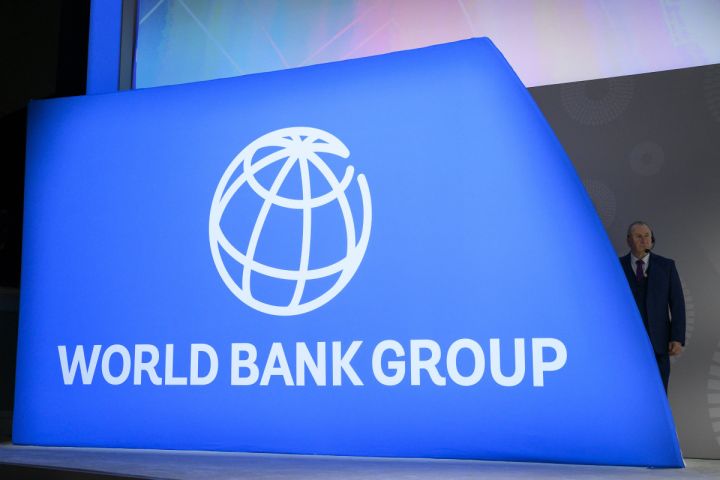
Dünya Bankı qiymətləndirməsində Azərbaycanın maliyyə xidmətləri üzrə 101 ölkə arasında zirvədə

Birbank-da əlavə 3 ay taksitlə bayramı dolu-dolu yaşayın
Ən çox oxunanlar

Dövlət bir sıra məhsul və xidmətlər üzrə qiymətlərə dəyişiklik etdi

“SİMA İmza”nın tərəfdaş sayı 100-ə çatdı
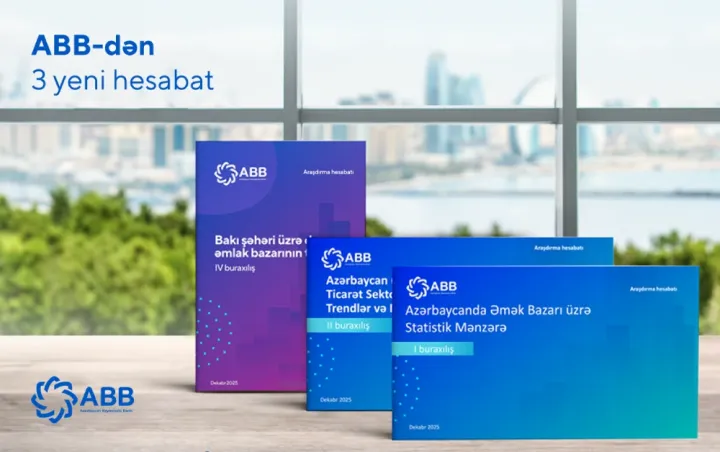
ABB-dən daha 3 hesabat!

Azərbaycanda Aİ-92 markalı benzin və dizel bahalaşdı


